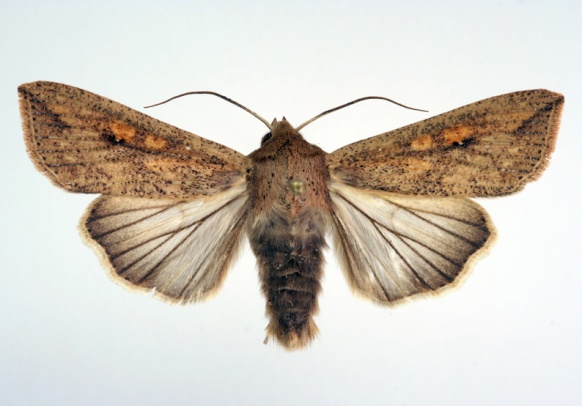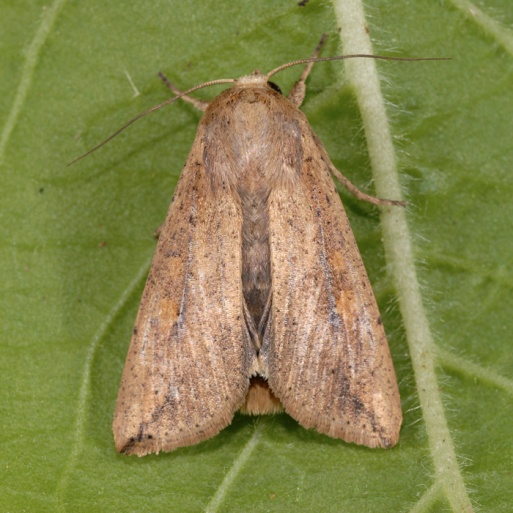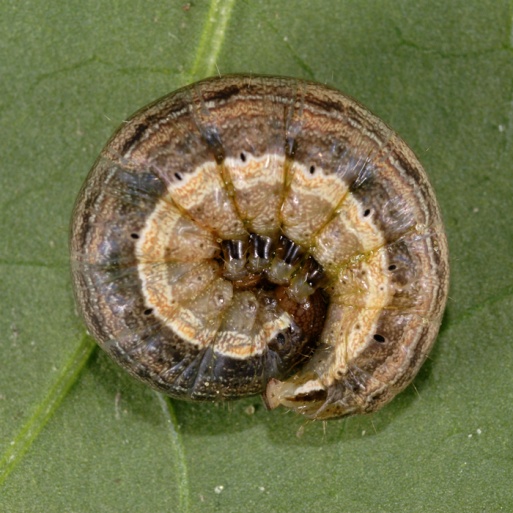
Armyworm
Pseudaletia unipuncta (Haworth)
(Insecta: Lepidoptera: Noctuidae)
Pseudaletia unipuncta adults are light reddish brown moths with a wing span of 40 mm. Each forewing has a minute white spot in the center. Larvae are dark greenish brown to black, with lateral pale white, orange, and dark brown stripes along the length of the abdomen.
Armyworms overwinter as pupae. Moths emerge in the spring, mate, and lay egg masses on host plants. Larvae feed for four weeks and then pupate in the soil. Multiple generations occur per year.
Pseudaletia unipuncta is native to North America and most abundant east of the Rocky Mountains. It migrates south in the fall, then north in the spring. Occasional damaging populations have been reported from Florida.
Armyworms feed primarily on grasses (barley, corn, fall rye, oats, wheat and forage grasses), but they can be pests of certain vegetables (bean, cabbage, carrot, onion, pea, pepper, radish and sweet potato).
Images
To
save the Web-optimized images shown below to your hard drive:
PC users: right click to "Save Picture (or Image) As..."
Mac users: click and drag to your desktop.

Adult
moth of armyworm, Pseudaletia
unipuncta (Haworth),
with spread wings
(Photographer: Lyle
Buss, University of Florida)

Adult
moth of armyworm, Pseudaletia
unipuncta (Haworth),
on leaf
(Photographer: Lyle
Buss, University of Florida)

Curled
larva of armyworm, Pseudaletia
unipuncta
(Haworth)
(Photographer:
Lyle
Buss, University of Florida)

Lateral view of the larva of armyworm, Pseudaletia unipuncta (Haworth)
(Photographer:
Lyle
Buss, University of Florida)

Dorsal view of the larva of armyworm, Pseudaletia unipuncta (Haworth)
(Photographer: Lyle Buss, University of Florida)